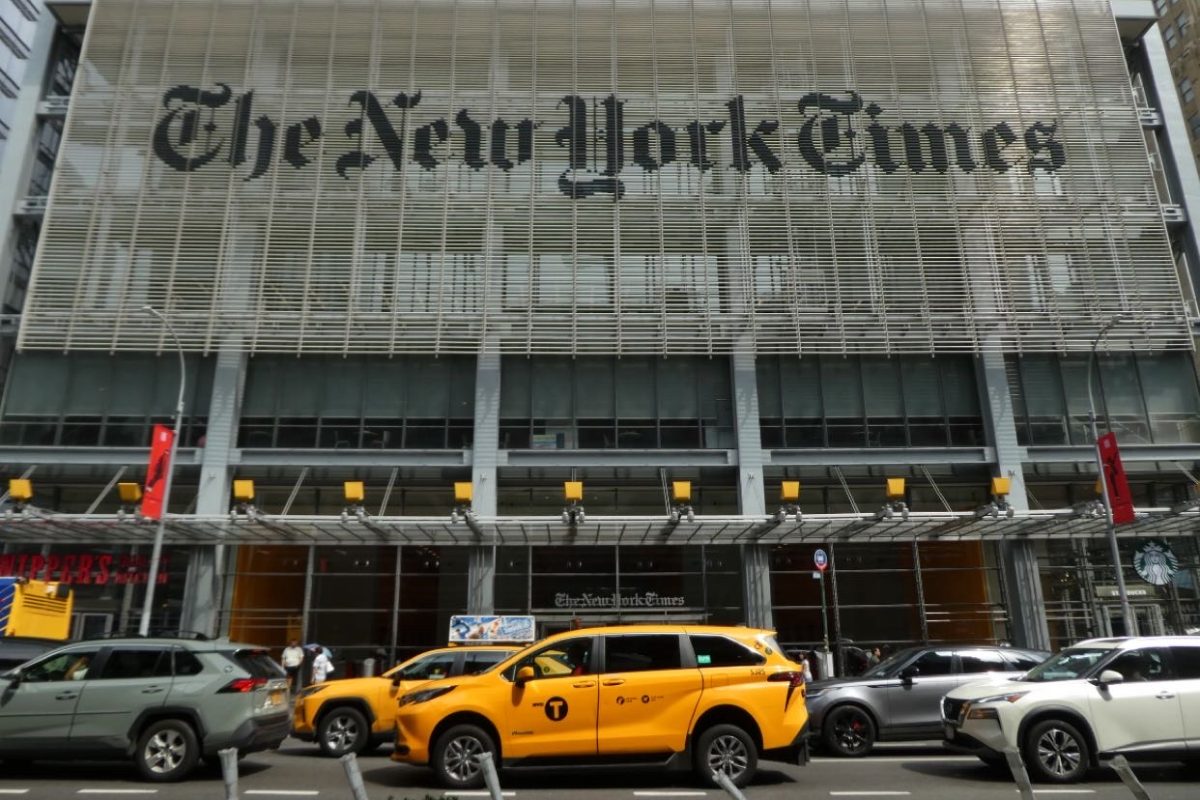
Christopher Bacon
Christopher Bacon (10) visits the New York Times building as part of the summer academy program. Participants were able to observe journalists at work within the building.
I rolled my suitcase along the New York City streets on my way to the Lincoln Center Campus at Fordham University.
“Oh God,” I thought to myself as I approached the striking glass doors.
I slipped in line with a group of kids, waiting just like me.The line moved quicker than I expected, and soon I was preparing to say my last goodbye. I gave one final hug to my dad as I entered the building. I didn’t know these two weeks would be some of the best.
The First Day
The first morning came, and chatter echoed across the dining hall; jitters and excitement were clear. After breakfast, I walked through the elevated courtyard to a classroom full of new faces.
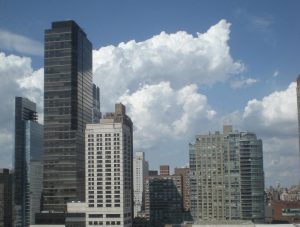
I sat down and began to introduce myself — I was more scared of being alone than anything else — and it paid off to establish friendships before class started.
The talking continued as a woman in a long blue dress walked in and set her to-go coffee cup on the podium desk. Anna Kodé, our teacher and a writer for The New York Times real estate section, began to introduce herself. The thought of an experienced journalist being our teacher was the ultimate motivation that kicked off a learning experience unlike any other, as she would provide valuable insight and information on the journalism industry.
Writing, Writing and More Writing
On the second day, we learned how to write a proper pitch and presented it in the first hour of class. The idea sounded intimidating; a journalist would be listening to, giving feedback on and ultimately grading our pieces.
Kodé wasn’t a typical instructor. Her teaching was free-flowing and came directly from the professional journalism world. She had gentle yet assertive guidance, bonded with her students and every piece of commentary was insightful.
After lunch, the class toured the New York Historical Museum. Upon returning to class, we wrote another pitch inspired by a museum artifact: an exhibit of Tiffany Lamps, or intricate stained glass lamps known for their floral motifs and bright colors, designed by Clara Driscoll in the late 1890s. They were a symbol of wealth and class. Despite her impact on high society, Driscoll received no credit for the lamps and her work passed without recognition. The exhibit was organized in honor of Driscoll and her creations, finally giving full credit to a lifetime of work.
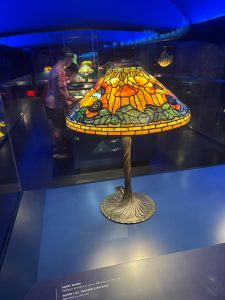
After learning about Driscoll, I knew that her story would make a great pitch. I was driven by excitement, and words flowed effortlessly off my keyboard.
Later that week, I did Q&As with journalists Luke Fortney and Alex Vadukul, as we were assigned to write profiles for both of them. The work kept me busy, but that came with priceless knowledge. We learned The New York Times code of ethics, studied how to efficiently navigate reporting to pick the best quotes and strengthened our understanding of the relationship between editors and writers. This all culminated in learning how to write and convey a professional story.
The experience was surreal, so when we paid a visit to The New York Times building, a strikingly tall skyscraper in Manhattan and the workplace of NYT journalists, I immediately wanted to work there in the future. Throughout the countless desks, books like “The Power Broker” were stacked on top of each other, and towers of printed papers grew high as journalists worked away. The noise of typing reverberated through the floors as people urgently reported breaking news from the building’s numerous live TVs, and the conversations of collaborators grew loud as they discussed their pieces.
The Final Project
Our course was about writing and reporting in New York, and our final project assignment addressed a current issue in the East Village.
Our class took two field trips to the East Village: once to gather inspiration for our articles and collect street interviews, then a second time to interview the businesses we reached out to prior.
I decided to focus on the Village’s gentrification and its negative impact on small business, especially bookstores. I also wanted to highlight the importance of these local shops, and the consequences if gentrification continued.
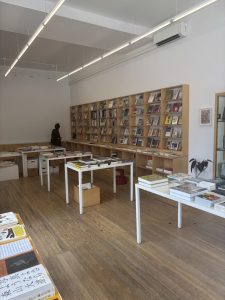
The first day was nerve-wracking — we had to interview people off the street. I received many weird looks, a bunch of “no”s and was ignored by a lot of people. Eventually I acquired what I needed and felt relieved as my recording app carefully transcribed every interaction.
The second day of interviews was exhausting. I went to seven small businesses in the humid New York air with a notepad in hand, tote bag on my shoulder, ready to ask questions regarding owners and worker’s personal experiences.
Eventually, after all the interviews and late nights typing away, I finished my article. As the final words were written, it was a full circle moment, as I accomplished what I came to do. I felt relieved to know it was done. However, the fact that I had to present the article still weighed heavy on my shoulders.
On the last day, I presented my article. I shakily stood up, forcing my hands by my sides to stop fidgeting. Knowing that I had a five minute limit, I went through my slides efficiently to make sure all the information was conveyed and people remained engaged.
I kept saying to myself, “slow down,” “stop looking at the projector” and “show personality.”
I thanked the audience for listening, and people began to clap. I looked to my left, where my instructors were sitting with smiles on their faces as they began to give me their feedback.
I looked around at the classroom that I had grown so fond of, with the realization that I would be leaving settling in.
The last positive comments from Kodé and my classmates made all the painstaking interviews and early mornings worth it. Leaving the classroom for the last time was upsetting, knowing that I would never have another experience quite like this.
Friends Forever
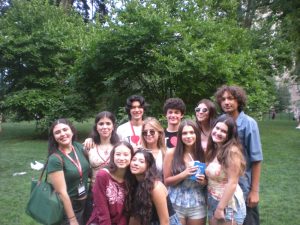
While there was work, there were plenty of friends and people to meet too. There were people that came from all over the world: Brazil, Portugal, South Africa, Zambia, Switzerland and many more places.
It never felt too far from home with my new best friends. Our bond was special — we grew closer every second we were together, and it felt like I had known them for a lifetime.
There was a thrill every time we left campus to explore the city. Independence and freedom flowed through us, whether we were down in the subways or up on the avenues.